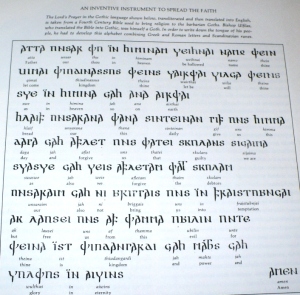
It all started with Jordanes who provides most of the literary evidence concerning the early history of the Goths. His De origine actibusque Getarum (551) is a Readers Digest version of the lost History by Cassiodorus (490-585).
Cassiodorus held several high offices under the reigns of Theoderic and Athalaric, the Ostrogoth rulers in Ravenna. I suppose he spoke the Gothic language. But scholars today question his claim that he based his history of the Goths on folk songs. More likely, he wanted to give the Gothic ruling class a glorious past matching that of Roman senatorial families. Cassiodorus probably used oral sources, but coming from a traditon of written sources, he might have known that he was putting the ‘story’ into History by merging these snippets into a coherent Whole.
It would not be the only time this happened. Geoffrey de Monmouth’s Historia Regum Brittaniae does the same by connecting the House Plantagenet to King Arthur, to name just one example.
We don’t know much about Jordanes, according to what he mentions in his Getica, he and his father held positions in the immediate surroundings of the leaders in the Alano-Ostrogothic tribal confederation in Moesia (Bulgaria) until Jordanes converted to the Catholic faith and took vows. His and his father’s name sound more Alan than Gothic to me.
Thus, we have the condensed version of a history that had an agenda, both written some 140 years after the incidents. The main tone of the Getica is friendly to the Goths whom Jordanes as well as Cassiodorus interpret as having tried to find a peaceful integration into the Roman Empire.
This is what Jordanes says about Alaric’s funeral:
FINISH READING AT–
http://lostfort.blogspot.com/2006/04/legend-of-alarics-burial.html








